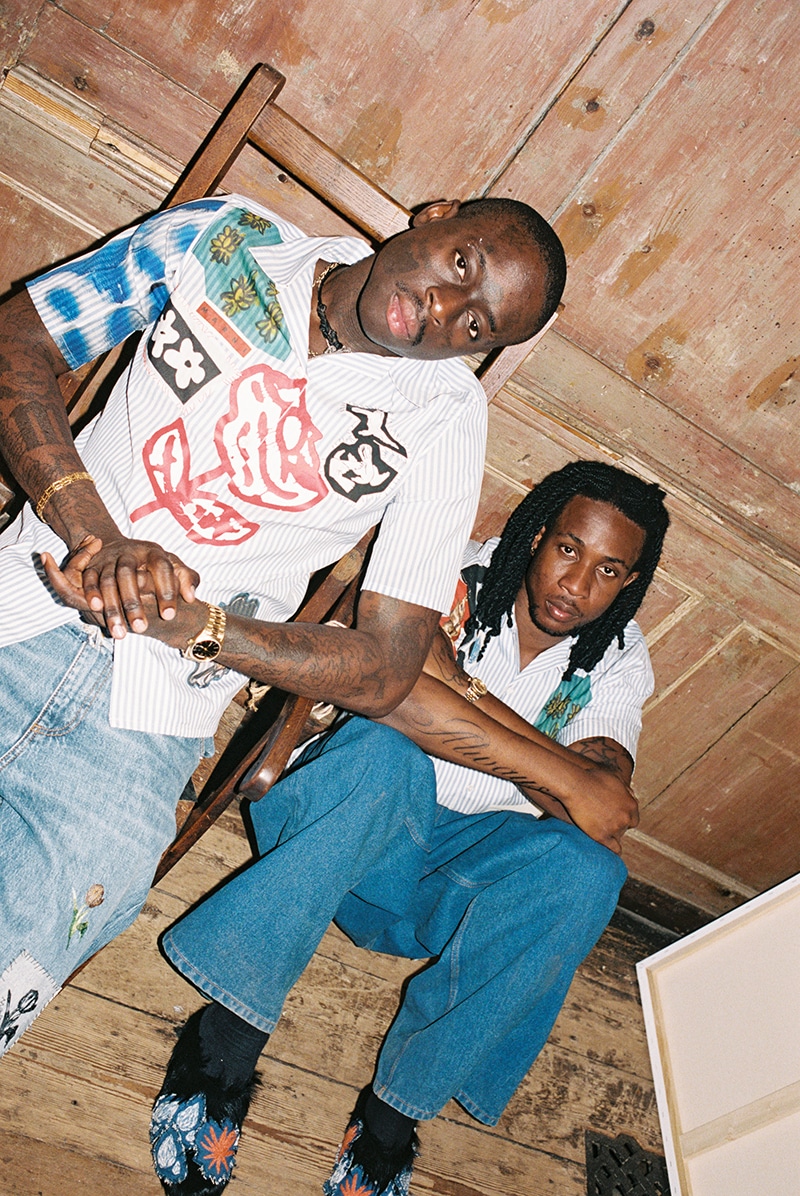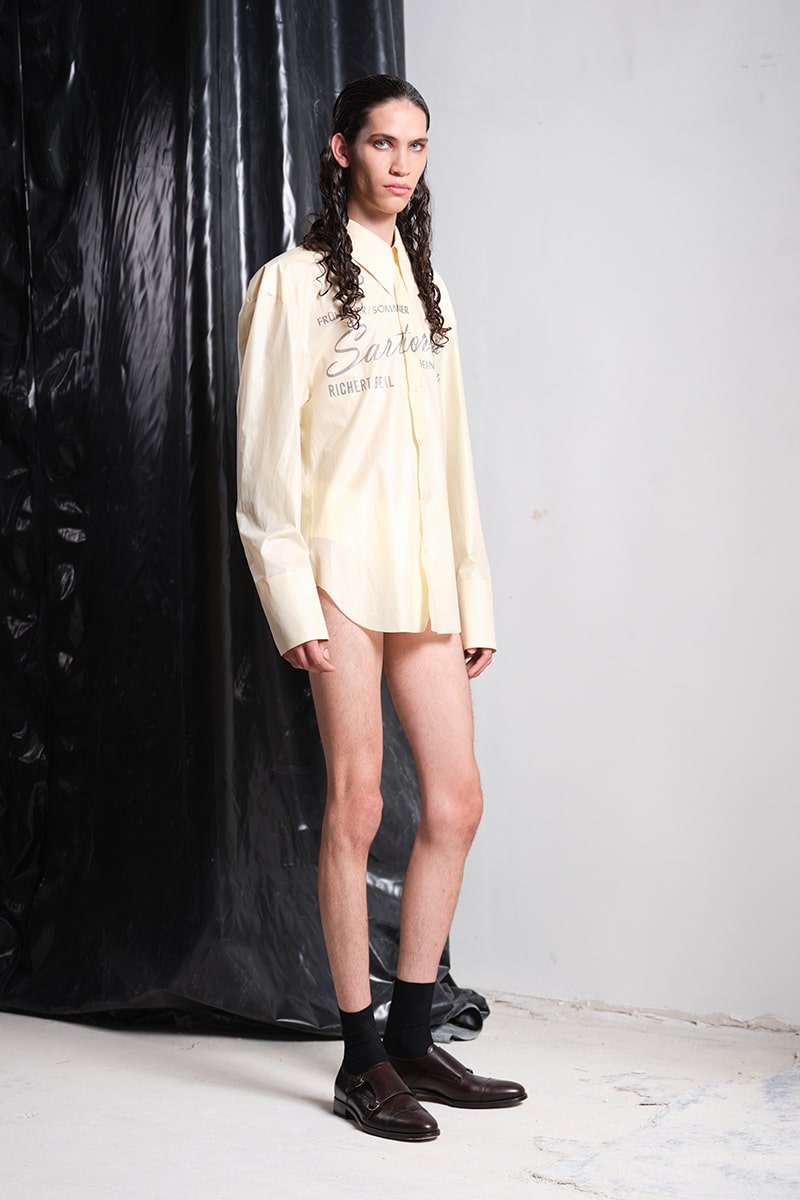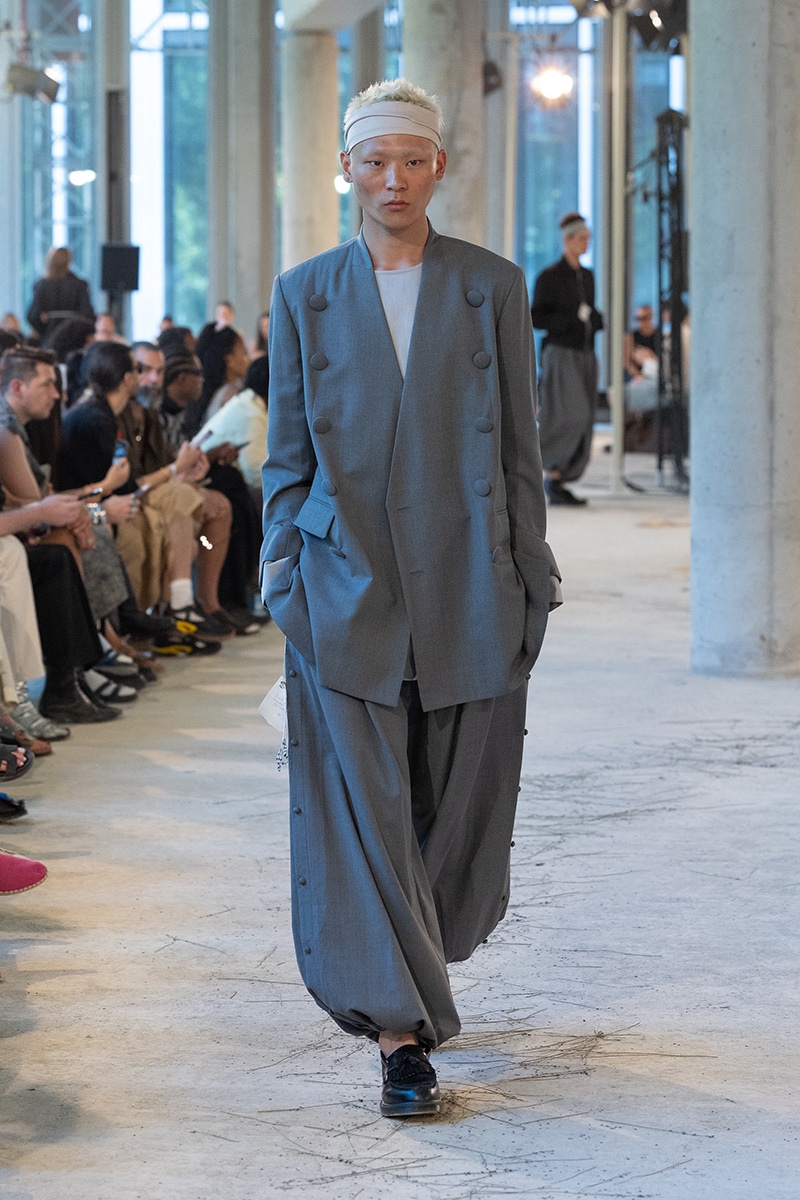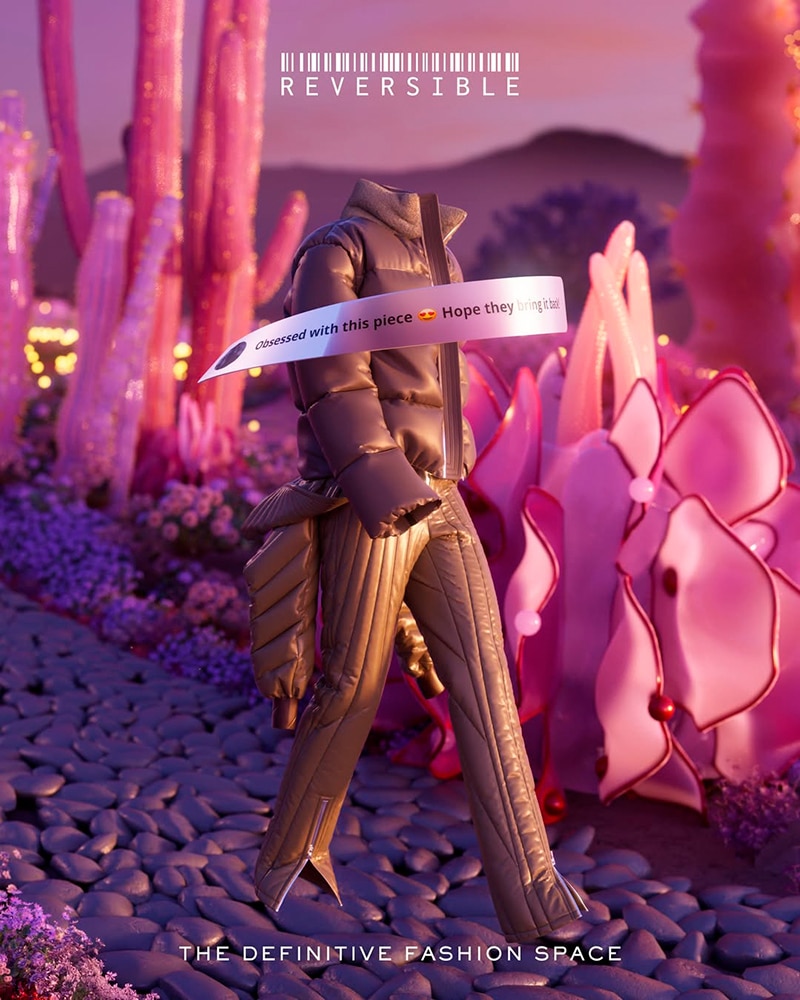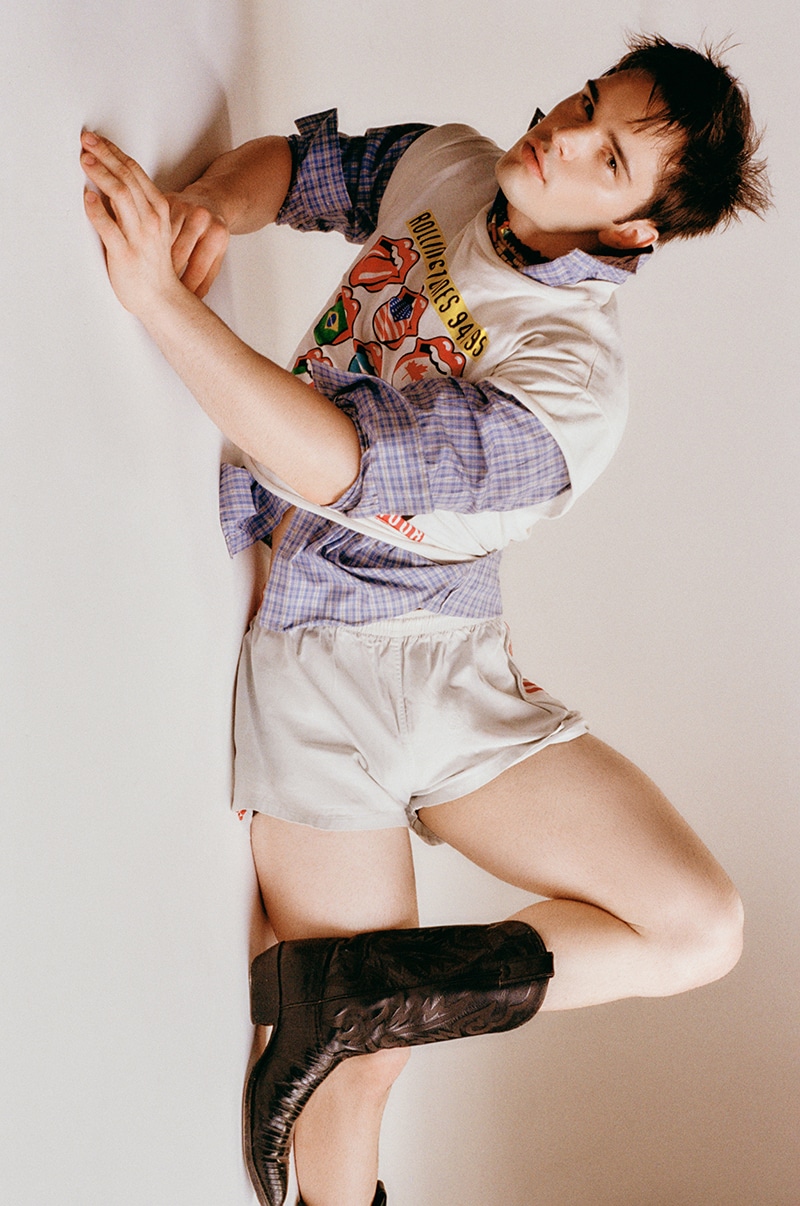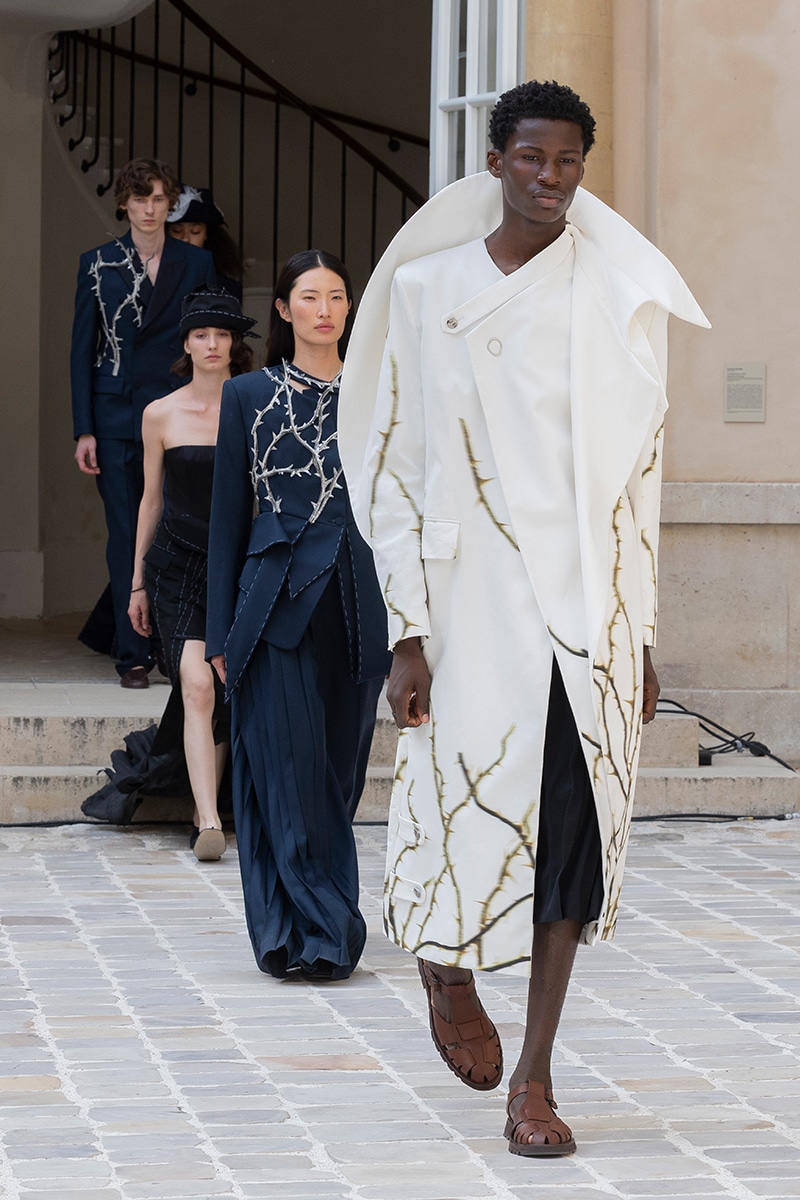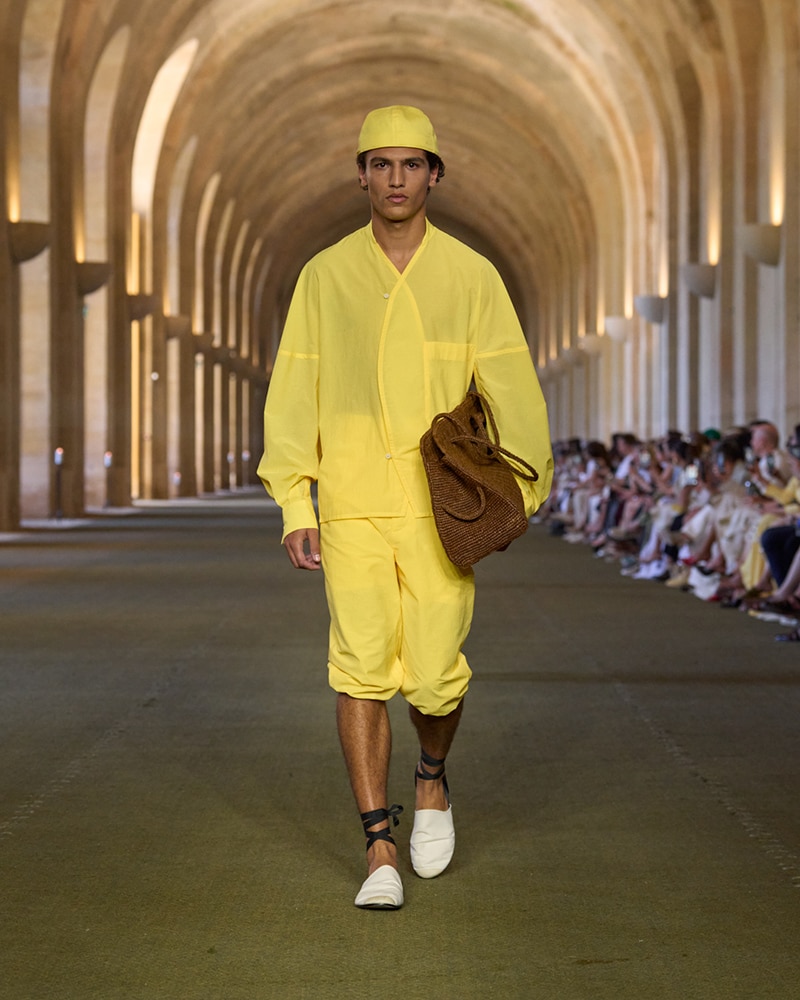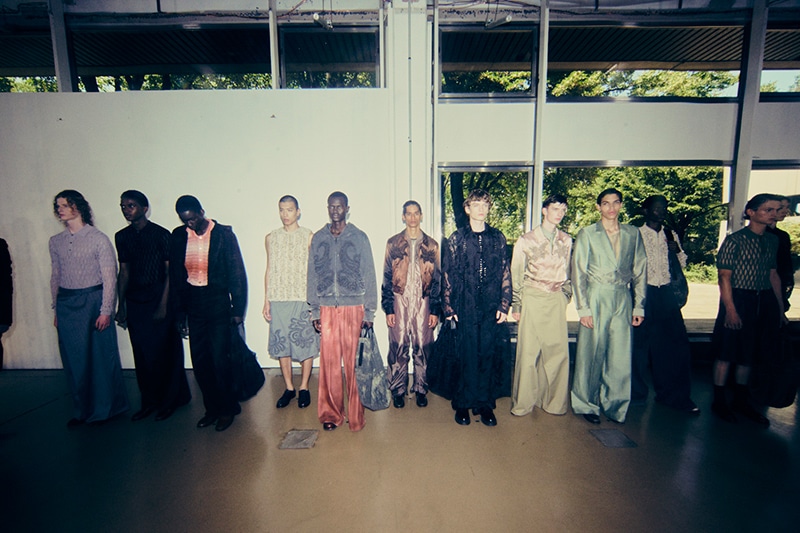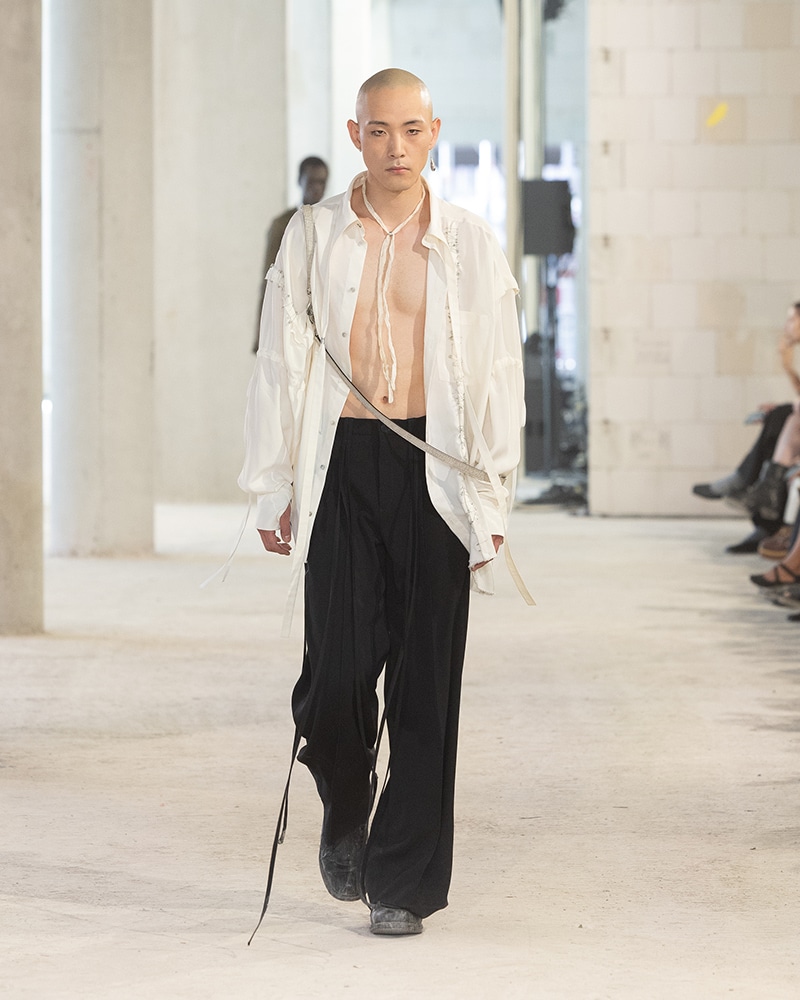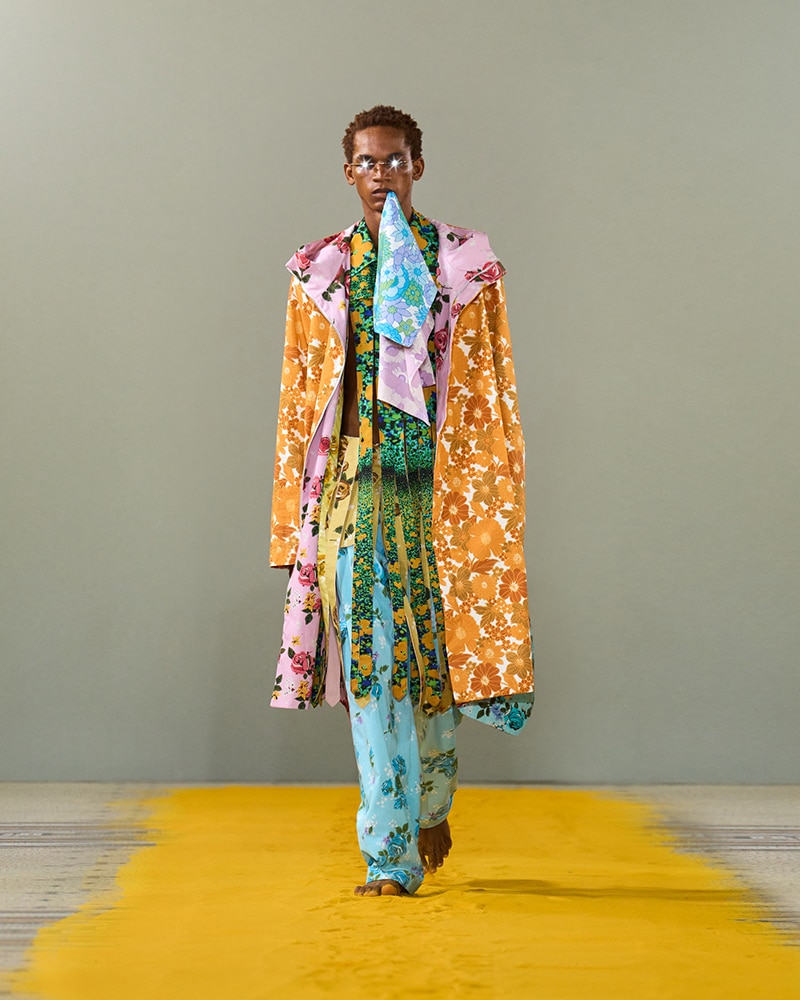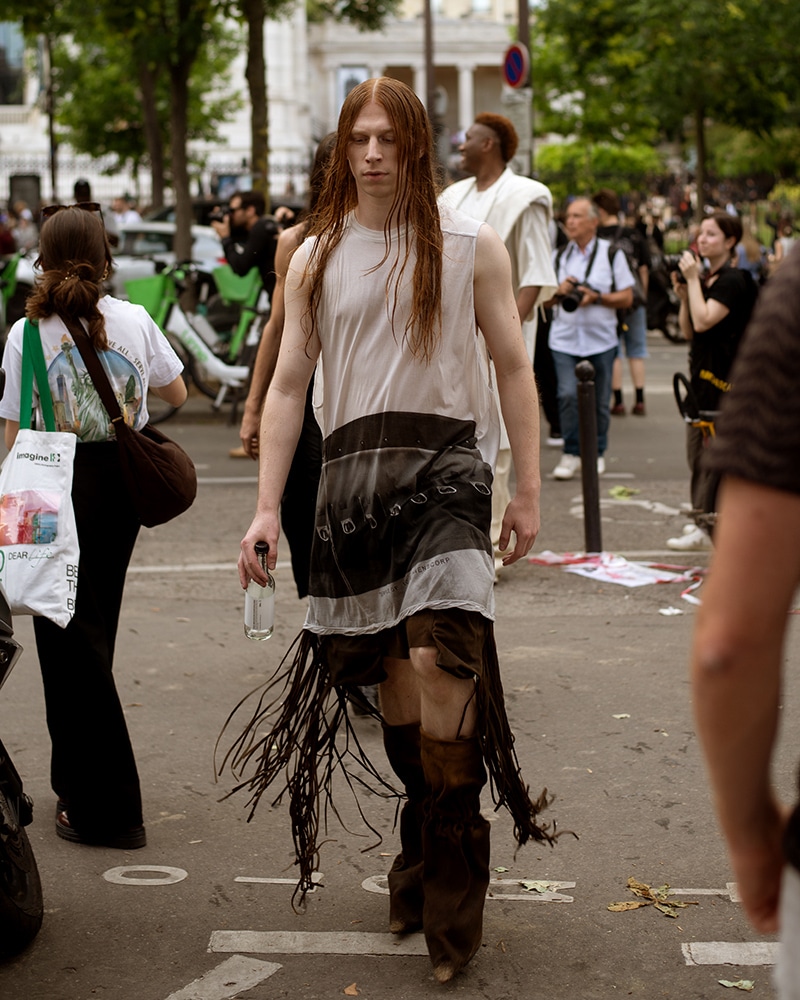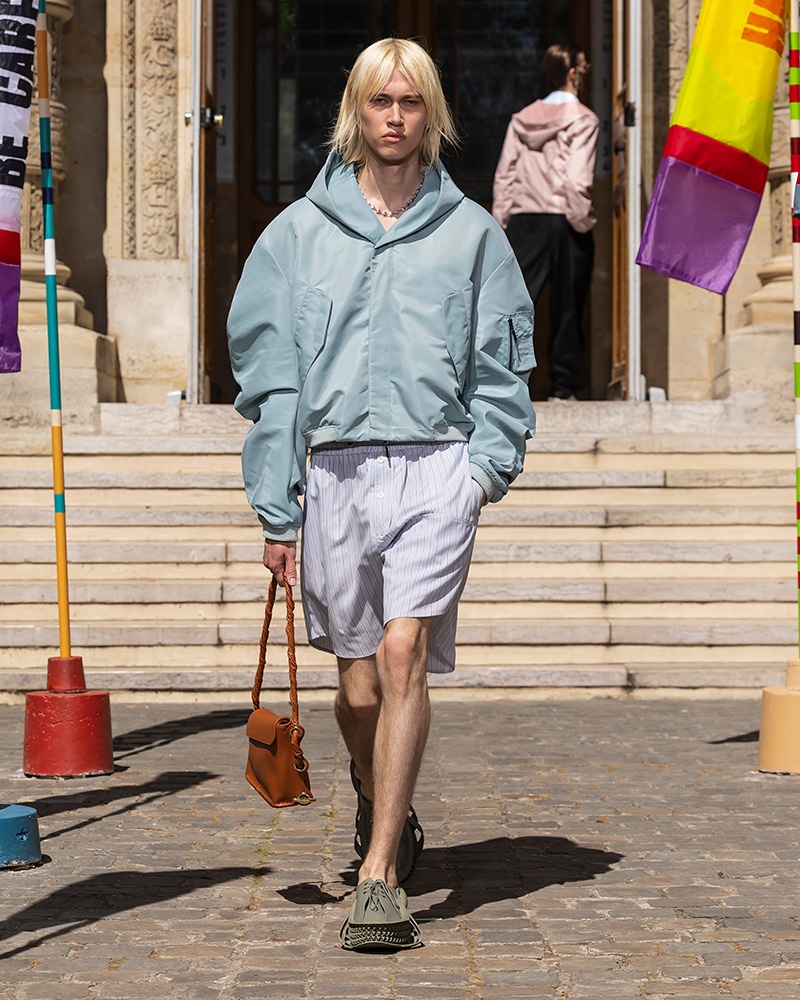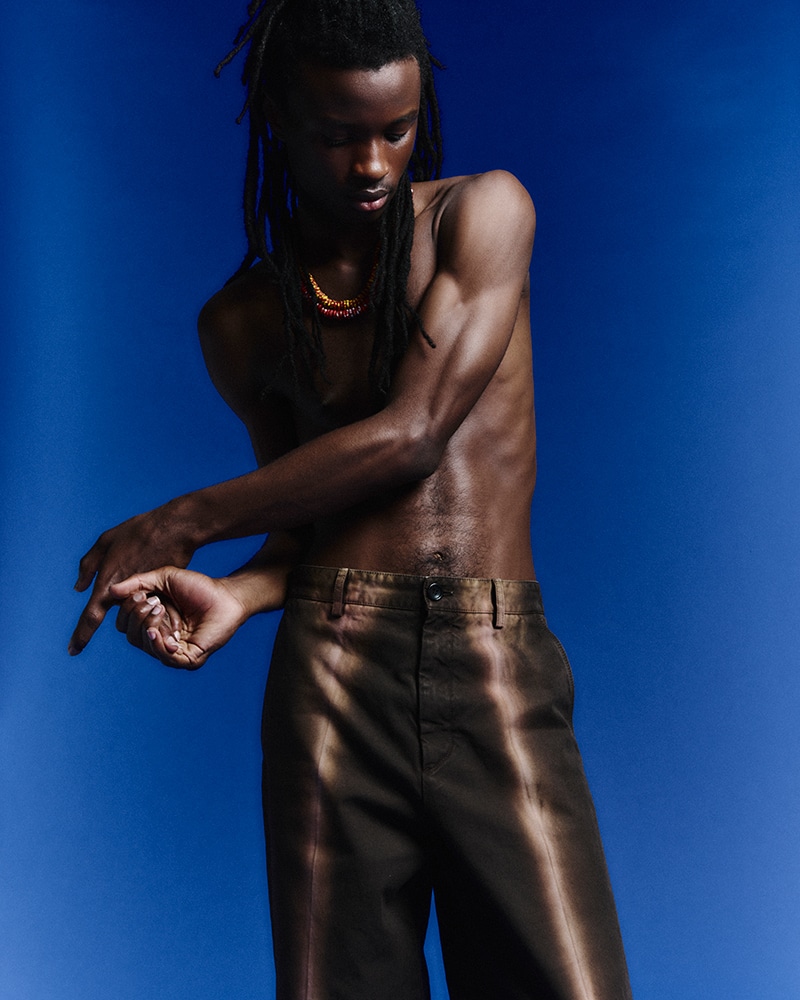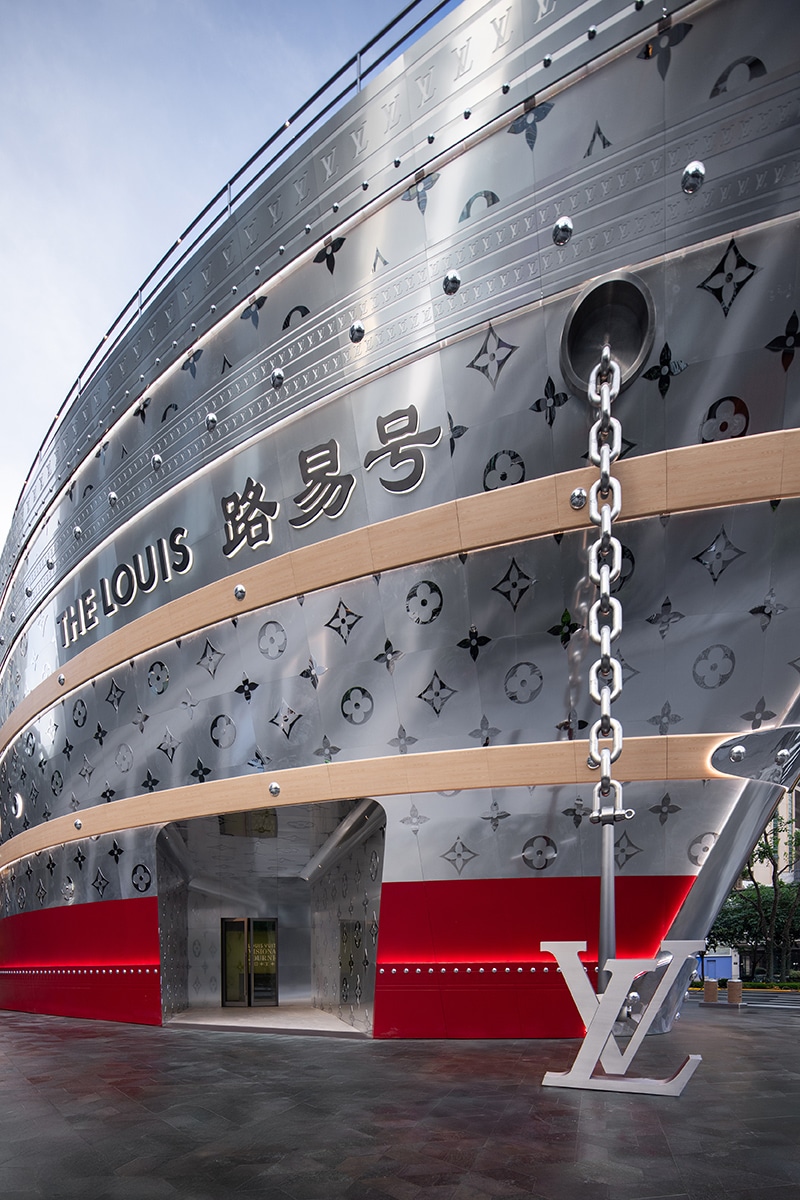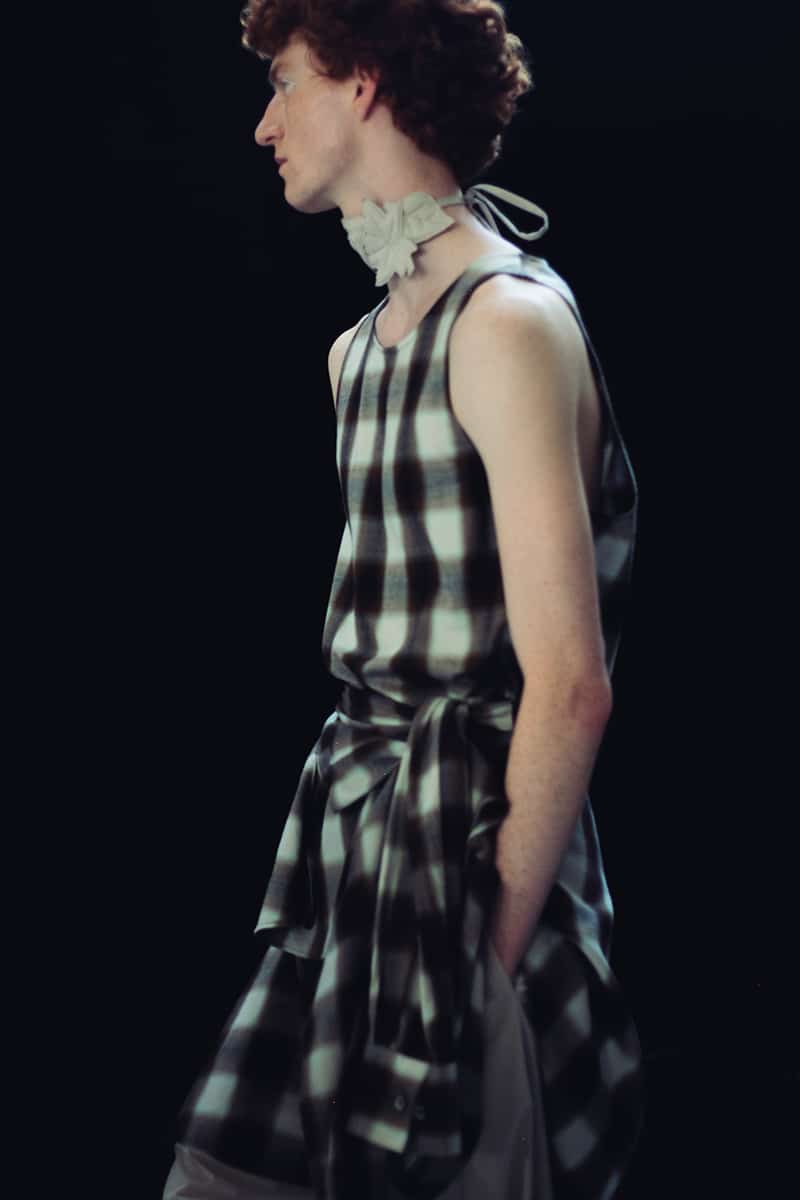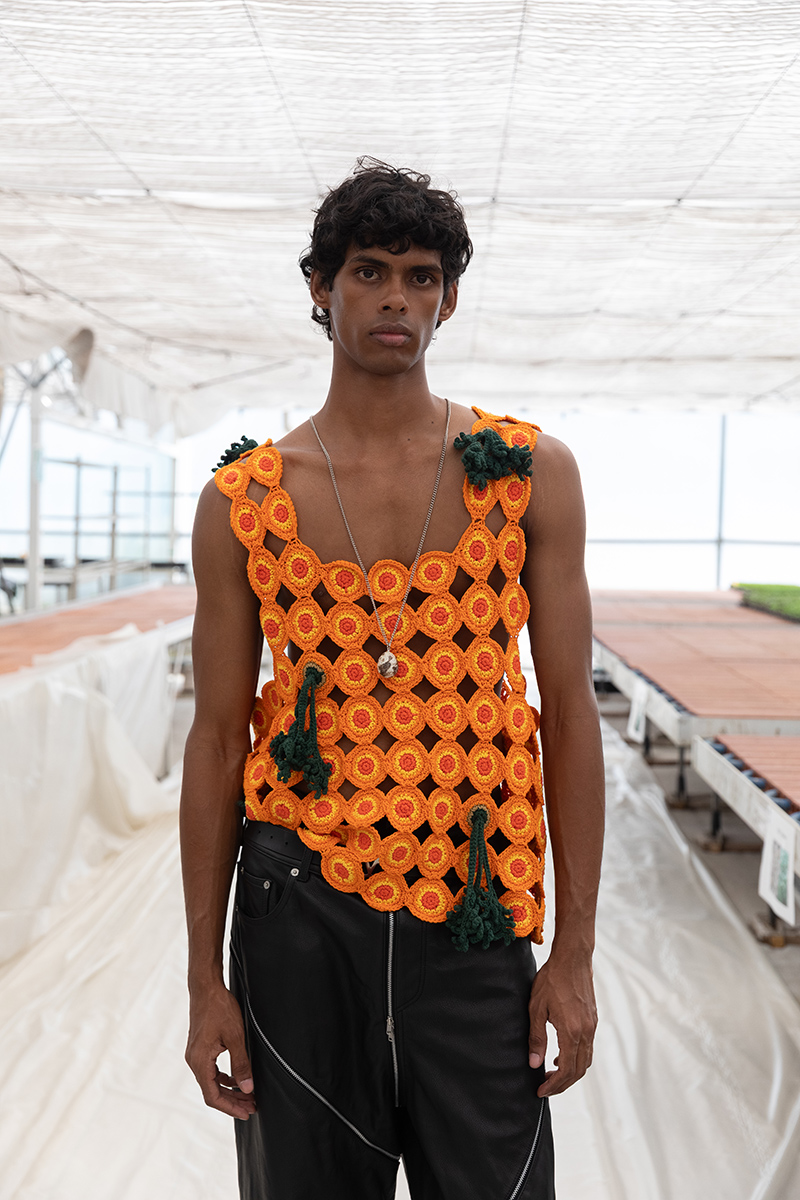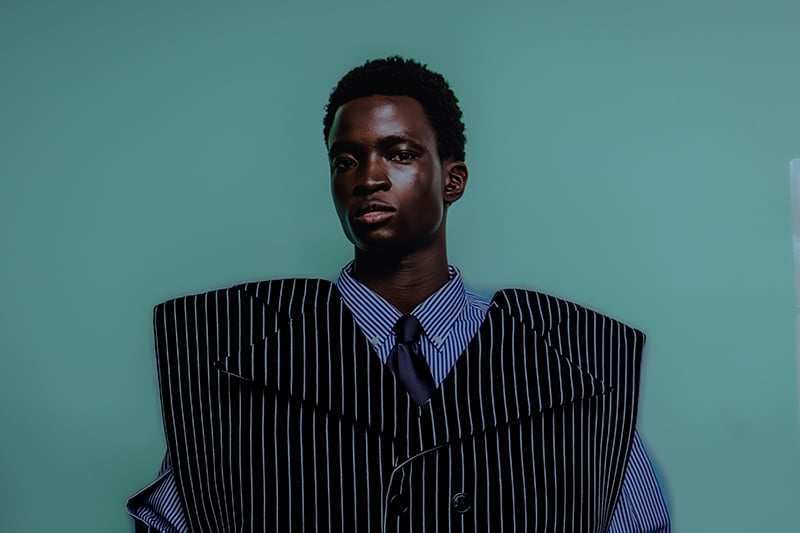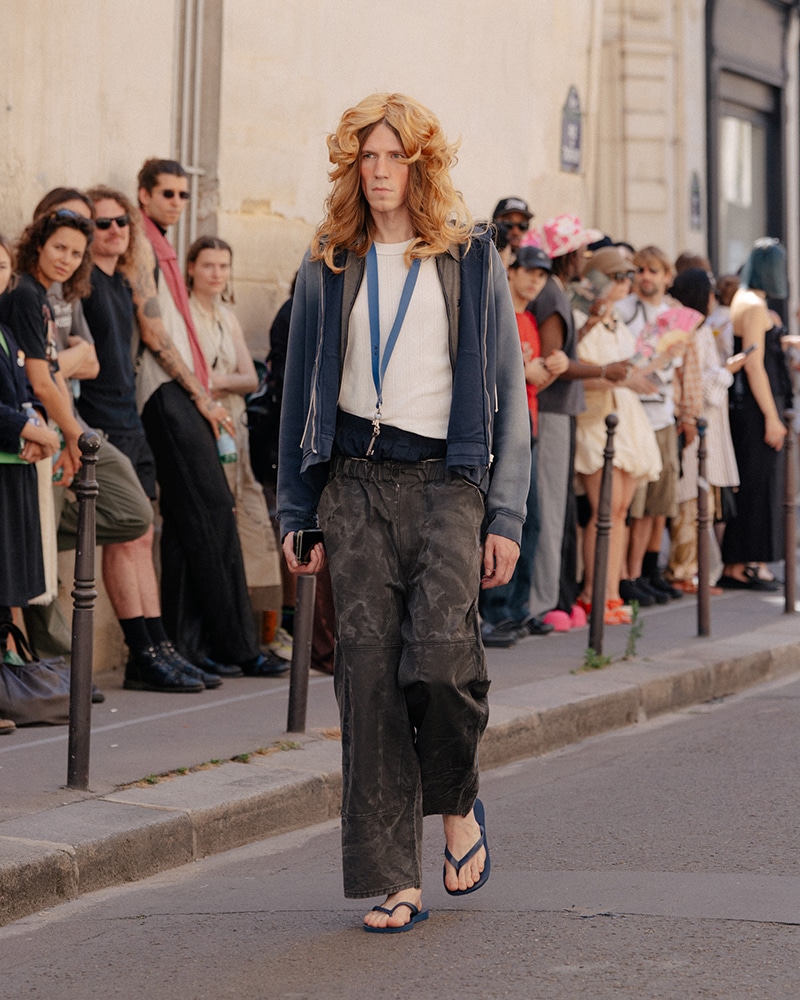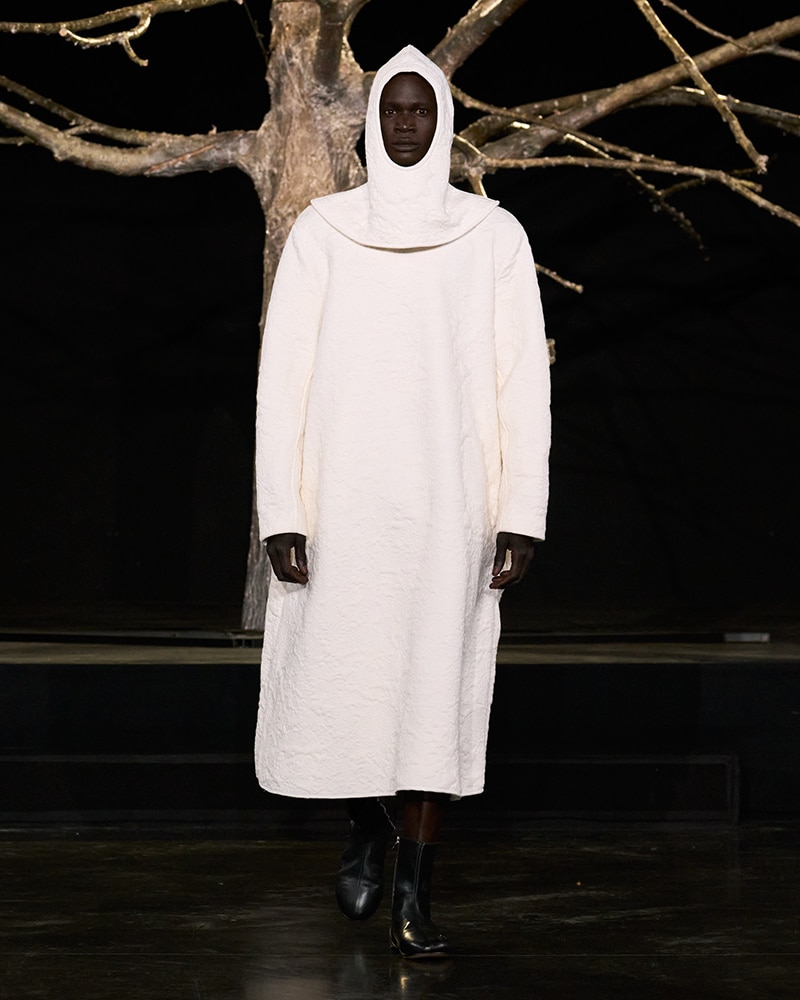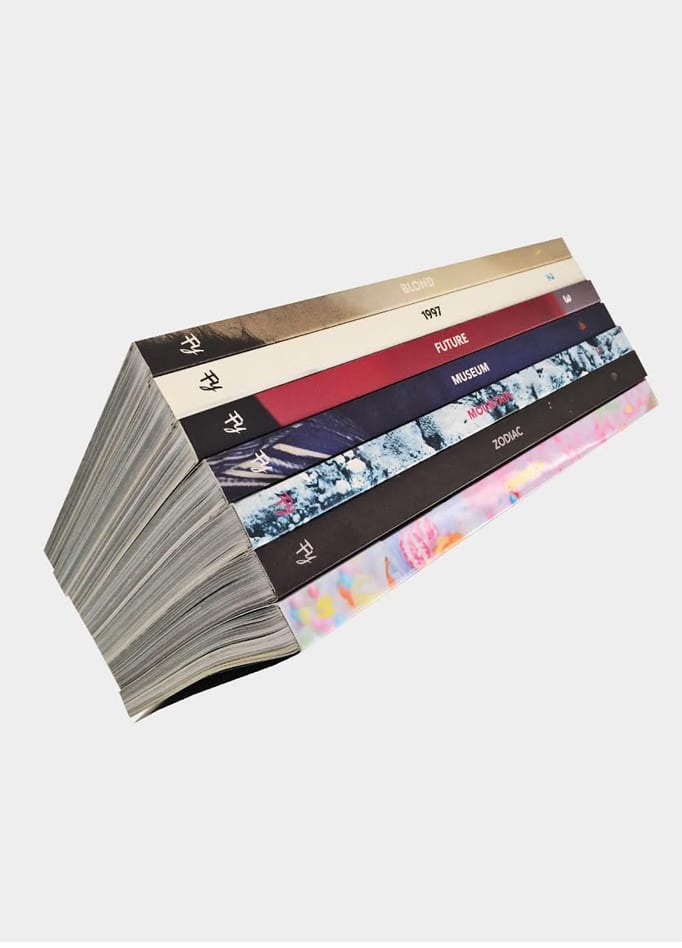One of the most powerful yet hardest to swallow statements Susan Sontag wrote in On Photography (Penguin, 1979) is the following: “Photography makes us feel that the world is more available than it really is”.
As much as reality has its own significance, the moment you click, let in the light and frame the view, you are creating a kind of fantasy. It sounds weird when read it like that, but this is actually how the artistic drive plays a role in capturing life-changing snapshots, because they help us to imagine a different journey. Kostis Fokas, born in Athens, Greece, is a conceptual artist whose artistic practice revolves around exploring the complexities of the human body, and is one of the most important photographers of our time.
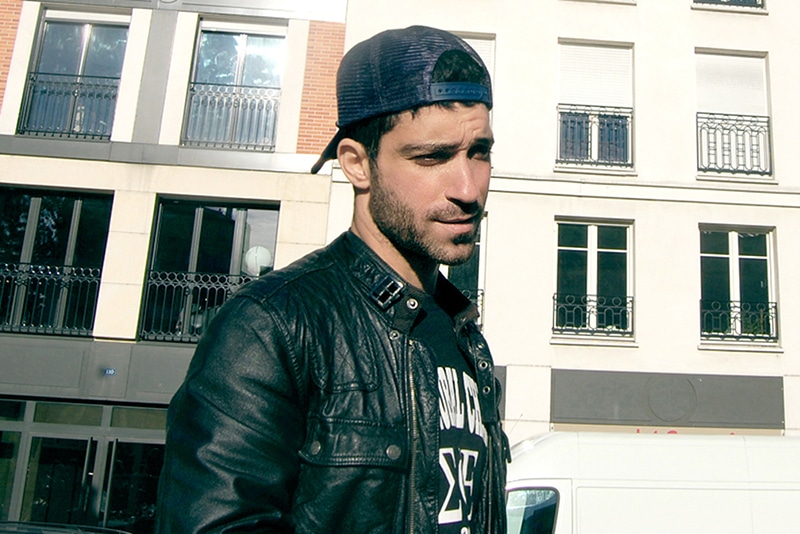
He has recently been included by Irish artist and curator Mark Francis Fenning in a special feature entitled 25 LGBTQIA+ Film Photographers You Need to Know! – 2021 Edition in Analog magazine. Fokas’ work examines and investigates the complexities of gender, sexuality and identity through pictorial representations of the human body. In an attempt to capture the social landscape of contemporary life, the artist offers a discreet look at the body as a site of desire, fantasy, submission and oppression.

As his career has developed, the playful, Dadaist elements of his early images linger in his current photographs, but have also made room for a rawer, wilder vision in his photographs: romance and physical interaction. His work of recent years depicts some of the most innocent and naïve fantasies of human desire and sensuality. Inexorably, Kostis Fokas invites us to glimpse into an unfiltered world in which our most intrinsic feelings and commitments become real and feral as he frames them. Fragmented bodies and body parts in strange and vulnerable positions are juxtaposed with wild landscapes and the astonishing beauty of the Greek summer.
Fokas boldly strips his model-friends down in front of the lens; yet, their poses are far from sexualized. A physical and spatial tension unfolds, as playful and surreal corporeal formations engage in a choreographic interplay of attraction, seduction, detachment, and resistance. Flirting with autonomy and vulnerability, his subjects are often witnessed as being in distress. One of Kostis Fokas’ greatest artistic skills is capturing movement in a photograph that remains still but when you stare at it, it virtually moves.

His works have been exhibited in the USA and Europe, including the Louvre Museum (Paris), Colette (Paris), Art Basel Miami (USA), the Benaki Museum in Athens and the Museum of Modern Art in Thessaloniki and Crete, among others.
His last adventure took place a couple of months ago, when he premiered his new work at the Schlomer Haus Gallery in San Francisco. The exhibition, entitled Psychosomatic, is about a personal journey related to human existence and experience. After suffering from severe psychosomatic problems 10 years ago, Kostis decided to focus his work on the human body. He uses the language of photography to connect with people, to be more open, and to share his own story as a form of therapy. Creating with the mind, but also with the body, is a feeling of personal fulfilment and completion. For him, photography is a safe place.
We recently had the opportunity to talk to him about his work, Greece, dance and nudity in art, and his next exciting stage.

You have just shown your first exhibition in San Francisco. Entitled ‘Psychosomatic’ and held at the Schlomer Haus Gallery, this new work shows the personal journey in which you have provided the public with your own story as a form of therapy to deal with psychosomatic issues. Can you tell us a bit about how you came up with this idea?
I started working on my personal projects in 2012, exactly 10 years ago. When I got invited by Steffan and Brandon from Schlomerhaus Gallery in San Francisco, I thought it was a great opportunity to review my work and my life during those ten years. Those two things turned out to be perfectly connected and directly related to a common object of reference, myself. In this flashback I began to discover things that I had not thought of until now. The connection between my sun allergy, the use of strong lighting, and the skin close ups I’m obsessed with. I started taking pictures exactly the same time when I started having psychosomatic problems. There were things I was dealing with and expressed subconsciously through my work. The reason I decided to use the word “Psychosomatic” was to narrate my personal journey.
Desire, fantasy, submission, and oppression: do you think these four words relate to your latest work?
Yes, all these four words relate to my work. I’ve always found inspiration in my fantasies and desires. Submission has a lot to do with trust. That’s how I experience it.

The statement of the show ends up with the line “for him, photography is a safe place to be”. There are some great examples in the history of photography where it plays a self-caring role, but how was the journey for you? And how did you feel after creating the pieces you have shown, regarding these psychosomatic issues?
The way I approach my projects has definitely the form of psychoanalysis. If one looks carefully, they will be able to discern even my most well-hidden desires and fears. In my photography I found a safe place to be more open and honest. It’s part of my everyday life, totally connected with my reality. But it’s also my way to escape from this.
Do you remember the moment you decided to pursue a career as a conceptual artist/photographer?
I believe that art should be meaningful. I mean, that is how I experience art. I’m always trying to connect. I like the ideas behind the artworks, and that’s exactly what and how I want to create. Something with purpose. At this moment I want to believe that I am part of a group of people – artists who in this particular place and time have a common goal. This is the goal that unites us and makes us stronger. I want to be part of a bigger voice that seeks and enforces change. A change that will make a society equal for all, fair and safe. This gives me purpose and a reason to keep going.
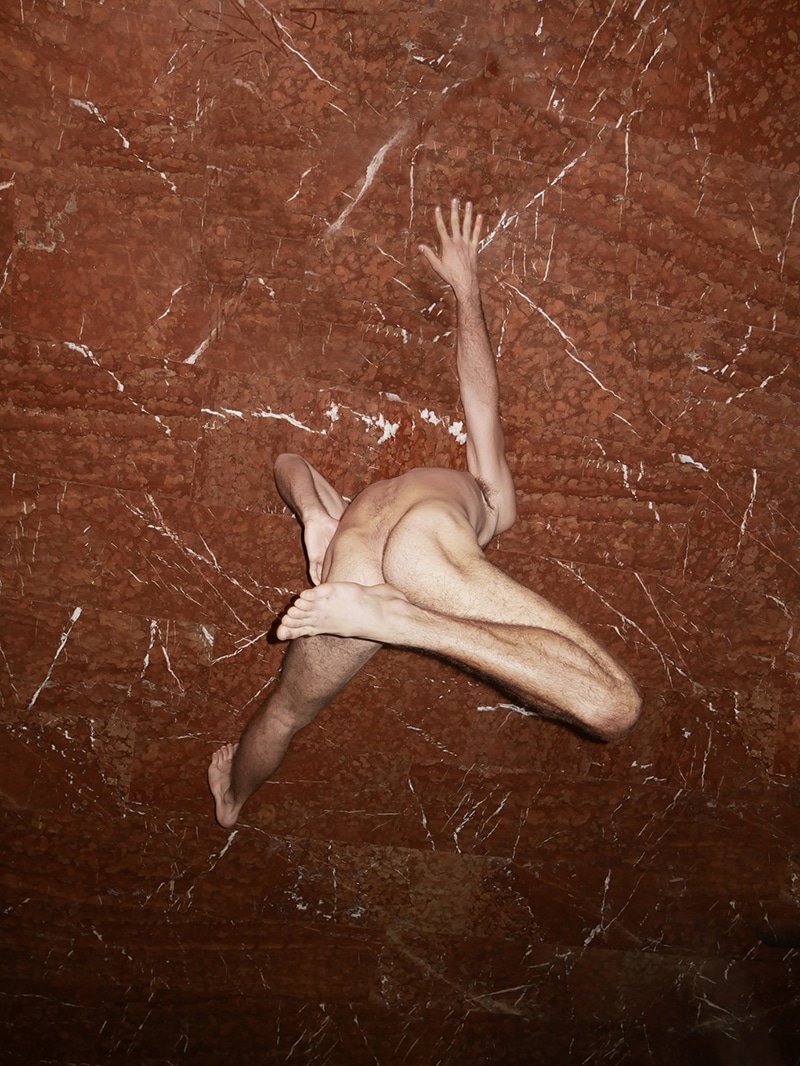
I recently got to see the short film “Don’t kiss.mov” by Carl Olsson and Fabio Liberti. It’s a beautiful video-performance in which two boys dance and move always linked to each other by a kiss. I could not help but think about your photography. Dance, as we mentioned, seems to be an intrinsic part of your stills, but also there’s tenderness and kindness and care in some of your photographs. Do you think there’s romance and love in your work? Sometimes it’s just what we need to see to get affected by a piece of art.
Yes, there is so much more romance than sexual tension. Even though some people find my work very sexually charged, my intention is that the touching bodies are experiencing the physical contact, but also the most essential and internal contact. Touching each other physically and emotionally is one of the most beautiful experiences.
It’s quite impressive how you are always able to reveal performance as a trail in the subjects, in most of your work. There’s movement and action that involves the main characters, and the way you portray and frame them lacks stillness, you can almost see that they’re dancing, wrestling or playing together. How important is for you to reveal the action between two bodies in your photographs?
We need to synchronize with the people we make contact with. Relationships can be wrestling or choreography. It’s all really about how much and the way in which we decide to connect, the action and the movement that comes through the contact. The reason I decided to work with dancers is because of their ability to express emotion with their bodies.
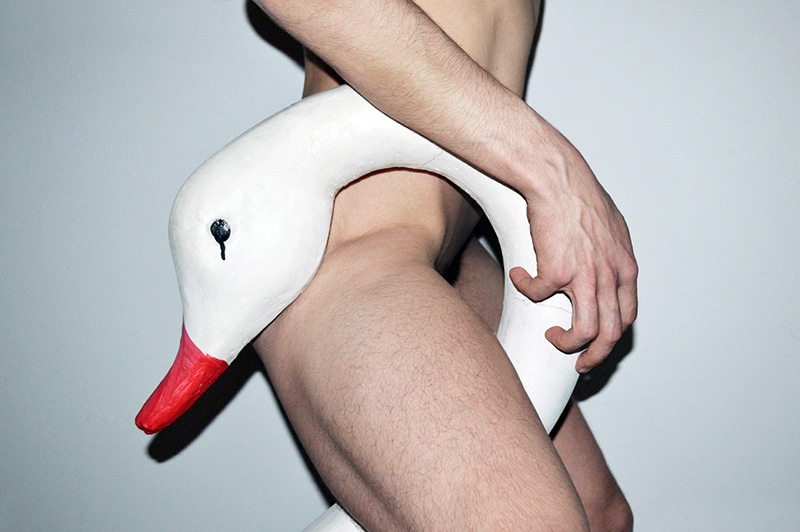
When it comes to nudity, and especially when you’re capturing trim and athletic bodies, you have a unique style. I’d dare to say there are different takes on it; one side is more about intimacy, another relates to a sensual tension, but there’s also room for fun and weirdness. How do you approach this last one interesting side?
I see myself as a weird person in relation to what it’s considered normal. So, it’s definitely a part of my personality. Weird can also be fun and playful, beauty is where you find it.
Following your work on social media it’s quite interesting to see a different approach to your last photographs. Most of them seem to have been taken at a room/studio (sometimes with a bed) and using artificial lightning. Not only it seems like you’re narrowing the possibilities of intimacy within your work, but those pictures happened to have been published during the pandemic. I wonder how it was for you, how did you deal with it personally and professionally, and if that’s the reason why this last set of pictures have been taken indoors.
The pandemic was the main reason I photographed mostly indoors the last few years. My latest work is about creating images with the strong feeling of internality. We had to come closer to ourselves and deal with our fears. We also learned to appreciate the beauty of being connected to other human beings and how important that is. The use of a bed is mostly because I feel that people are more comfortable there . “Its a safe place to be” to make a reference. It’s also the place where dreams are made.
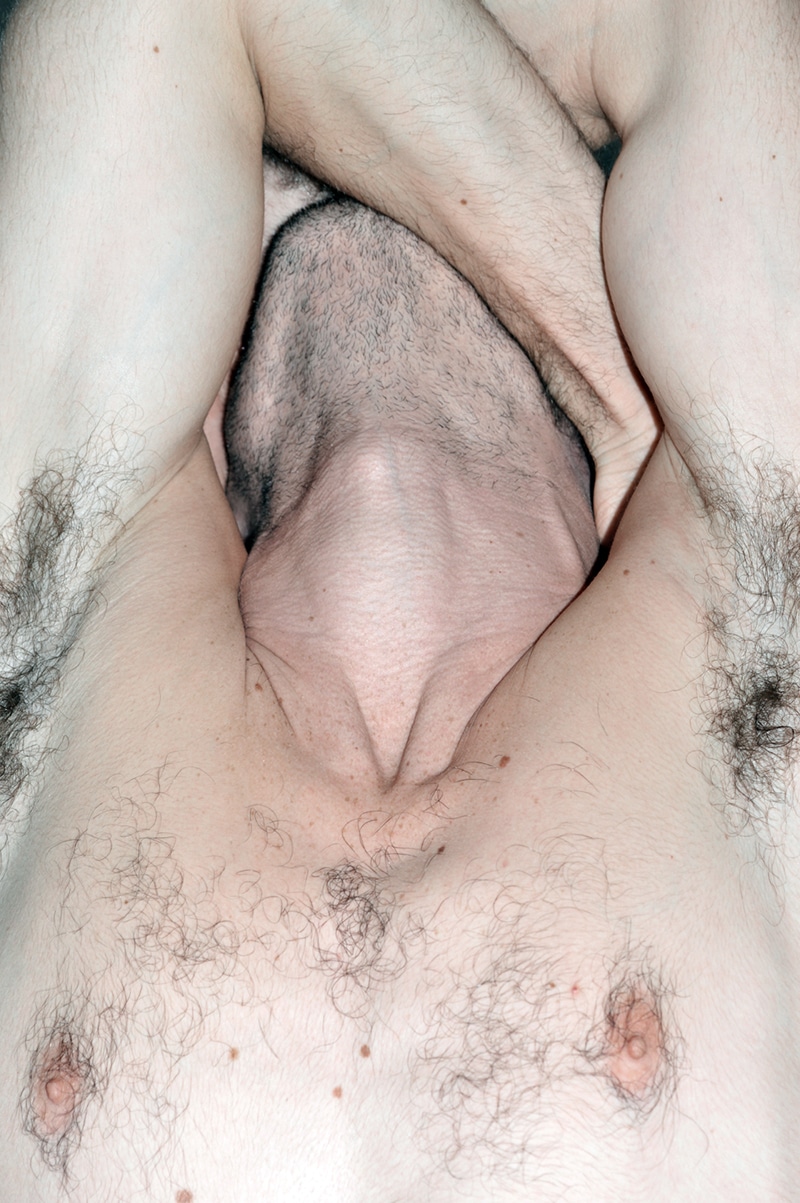
It’s quite exciting to see how you work sensuality and sexual manifestation. I think gay men have turned to this type of photography historically as a way to find excitement and pleasure, but also to get to know other male bodies and homosexual physical experiences sometimes, sadly, as their only access to them. The world we live in now is different, secrecy and suggestion are nowhere to be found, especially online. Have you found censorship or discrimination in more artistic environment because of the content of some of your photographs?
Artistically the online presentation on the large platforms is very limited, it lacks artistic freedom unfortunately. We are forced to limit ourselves to something that has a big impact in the overall vision. I, at least experience it this way. We need these platforms and they need us, but sharing is not fair. Censorship and discrimination is part of my work and my life as well. Yes, I believe people in art are suspicious of the content of my work. Fortunately, I have had opportunities to communicate my work in more substantial ways including exhibitions, which are my personal goal. The works have been created mainly for this reason in my opinion, that is to have a physical existence.
Is it important for you to photograph more normative-like male bodies?
For me it’s important to change the way we perceive the naked body. Over the years nudity has been associated with sexuality, or it has been in the consciousness of people. But it’s not only that. For a long time wrong patterns of beauty were created and repeated. My perception is that a naked body can express many different things. Freedom is one of them, acceptance is another. Accept our nature and create new standards that people can relate to.


Some of your photographs take place in gorgeous places and retreats form Greece. Some of them are quite luminous and summery; often, when you look at some of these beautiful manly bodies playing with/against each other, you get a great sense of liberty by just looking at them. It makes me wonder about the situation, for an instance, for two boys sharing public affection in those places. Are these types of situations safe for a photographer taking pictures of two gay boys “in contact” publicly?
An outdoor shooting always has surprises. Sometimes they are very unpleasant. I have been taken to the police department more than once during a photo-shoot. I have been threatened and bullied numerous times. No, it’s never safe to be out there.
How much of Greek history and art are a part of your inspiration for your work?
I grew up and lived most of my life in Athens so it’s a huge part of me. Since I can remember I’ve always loved Greek history and art. It was always in front of my eyes, so I consider it to be a great influence on a personal level. I learned to love art through Greek art.

It’s inevitable (and quite beautiful) to think about your pictures as a journey, a diary. How much of them are just a product of the moment? How much of this process has to do with being a queer person? Would you say that your work is “your artistic language”?
They are all perfectly connected. In many occasions I have been to a beach with my friends and while we were having fun I took some of my favourite images. The same can happen with my boyfriend when we are home spending time together and want to be creative. These are very personal times. In my work I see moments and memories, lovers, friends, specific times and places I have been. It definitely takes the form of a diary. This is one of the things I really enjoy. I often don’t separate my personal life from my work. It’s all one.
LGTBQI rights are struggling all over the world. One should think that by 2022 these issues should have been overcome and conquered, but unfortunately, they’re not. How do you see the situation for LGTBQ people in Greece?
I’d like to believe that things are moving in a more positive direction in Greece. We still have a long way to go, but the scenery is changing. Visibility in these times is the most important thing. We have to put ourselves out there, be visible!

Do you sometimes in interviews (like this one, lol) feel the need to tell the other person “because I like it and that’s all” when it comes to asking about the origin and inspiration of your work?
Many times, there are no answers to questions, and sometimes it may not even be needed. When I create I follow my instincts. I have learned to trust it and it has vindicated me. Through my photography I’m still learning.
What’s next for Kostis Fokas in 2022?
I’m planning a big personal change in my life. My work is an integral part of this change. I want to keep my excitement for the future, even when it seems really hard considering the times. For me keeping it positive is a life goal.
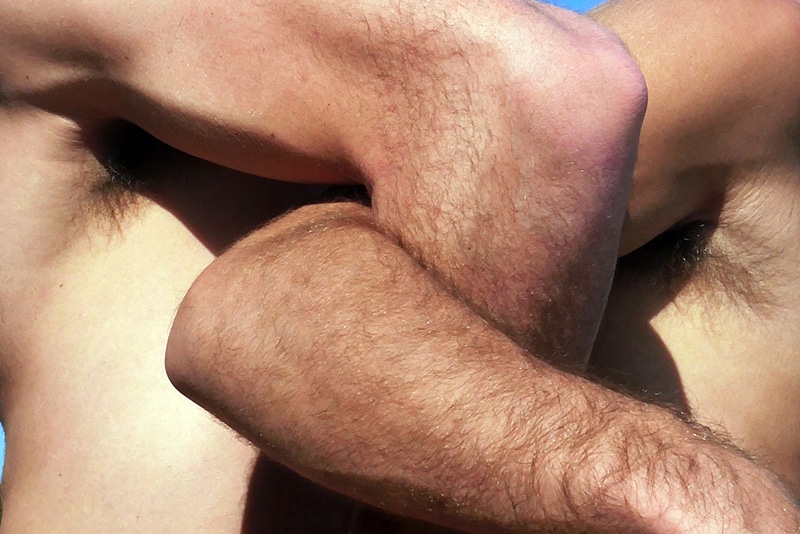
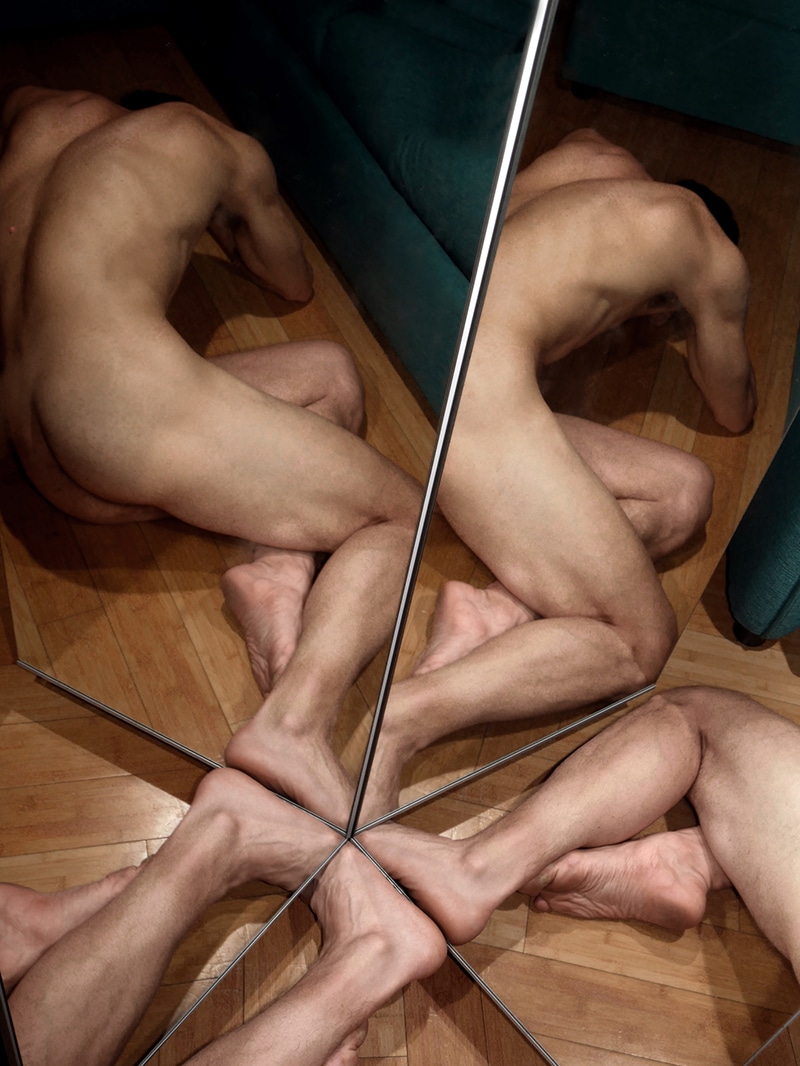
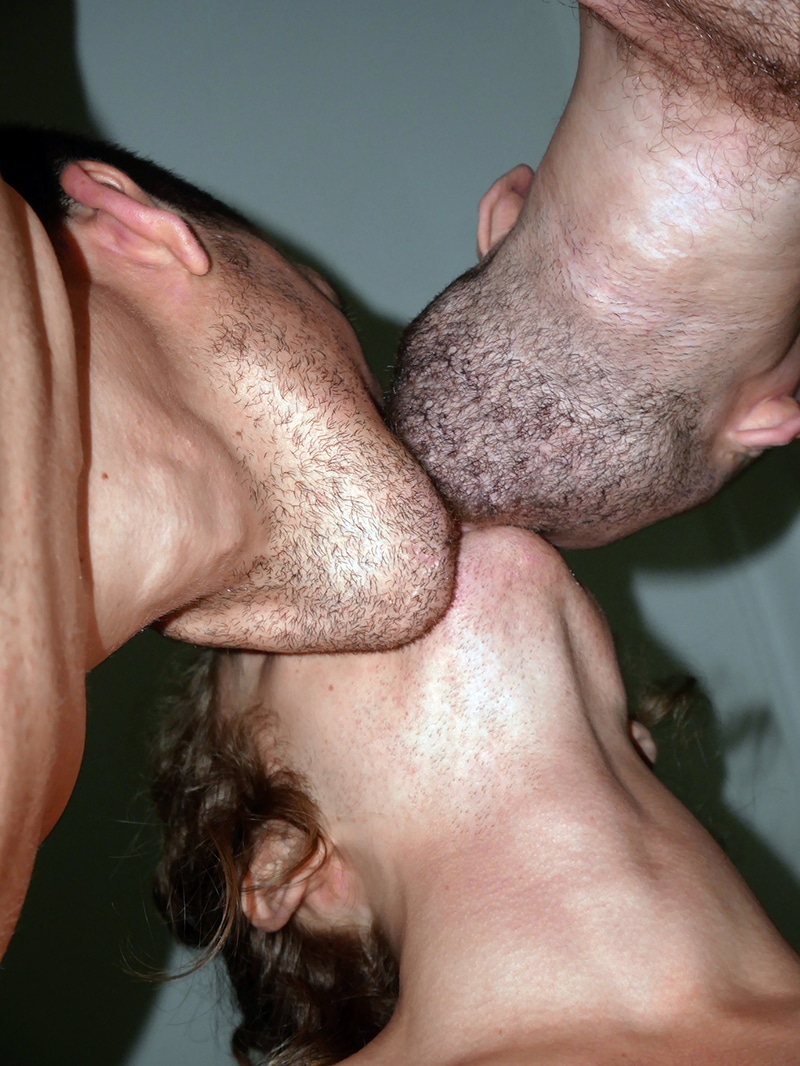
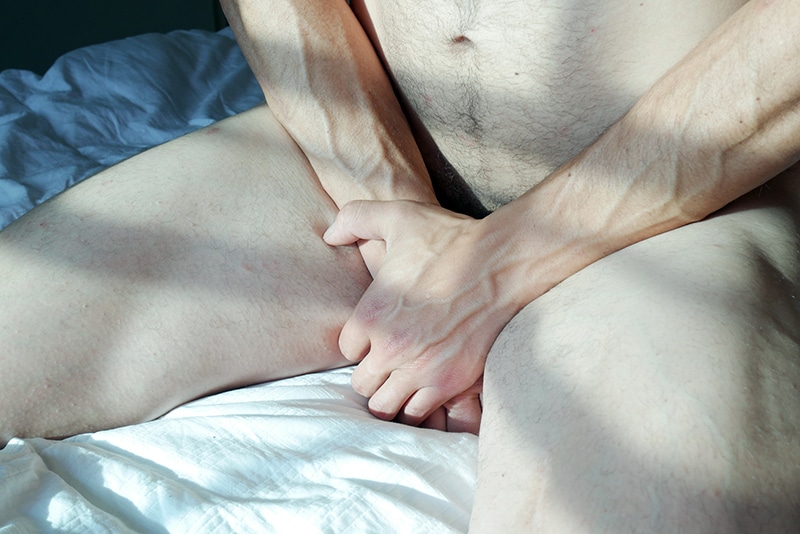
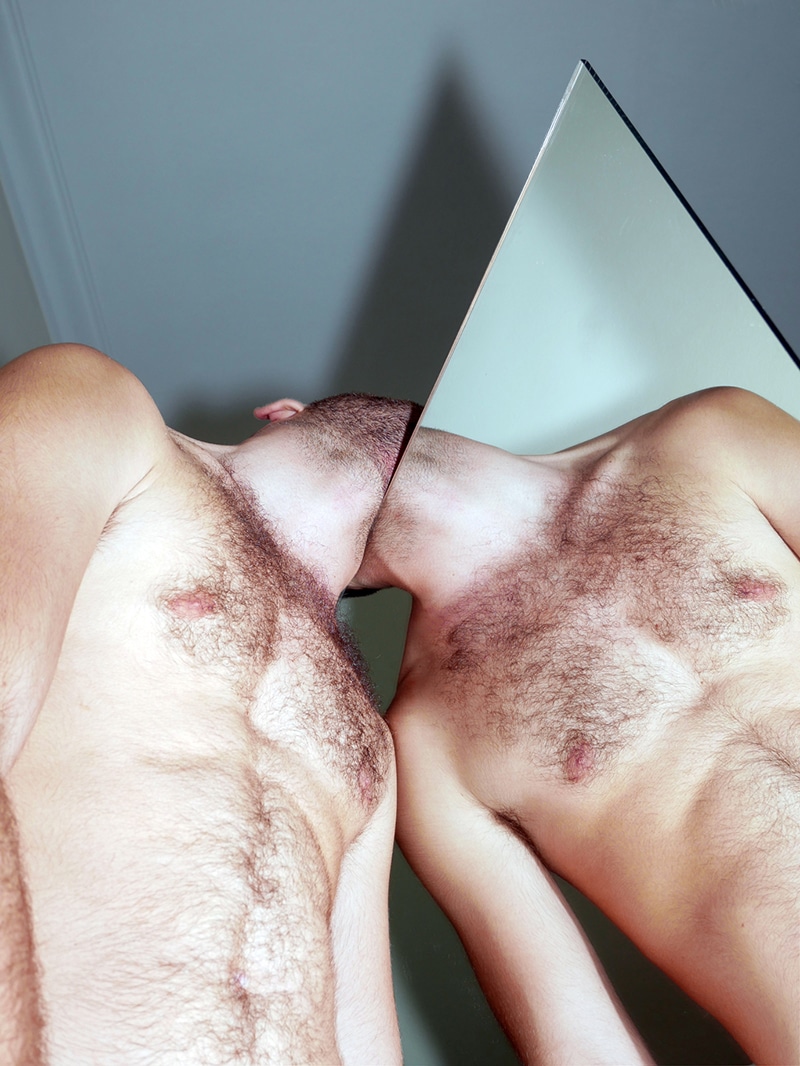
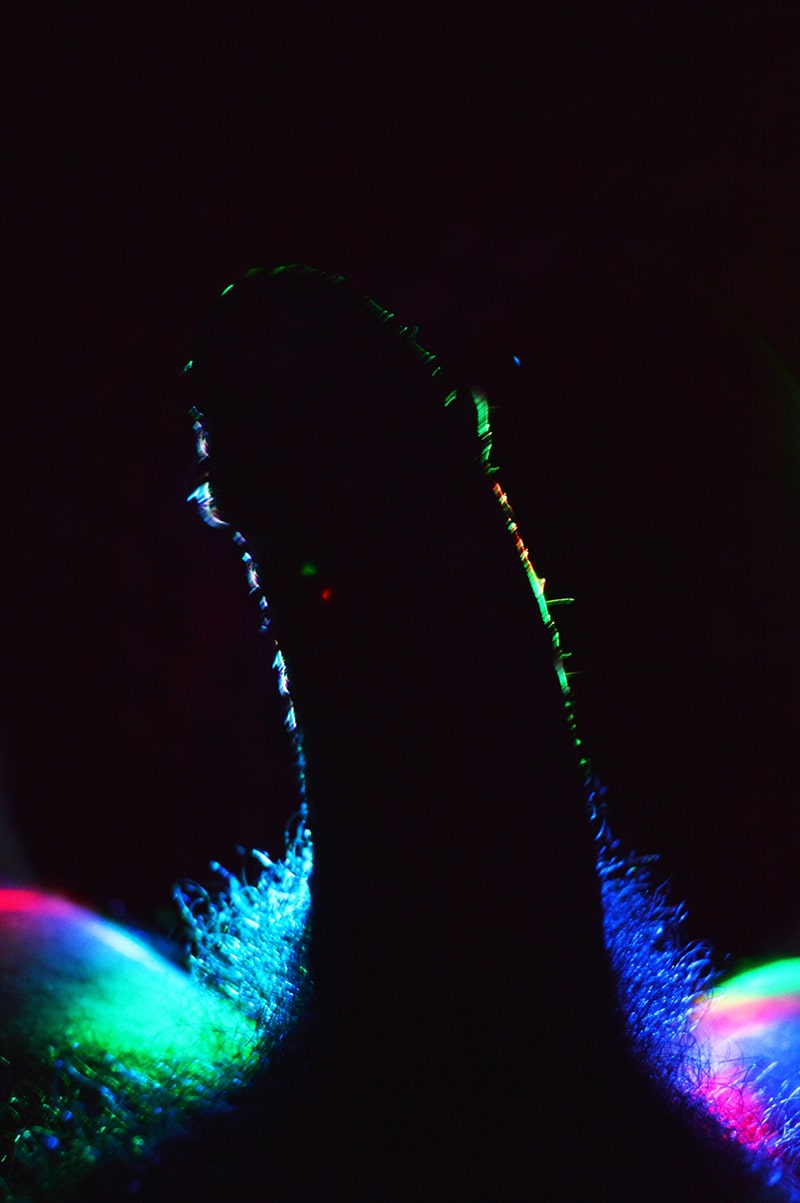
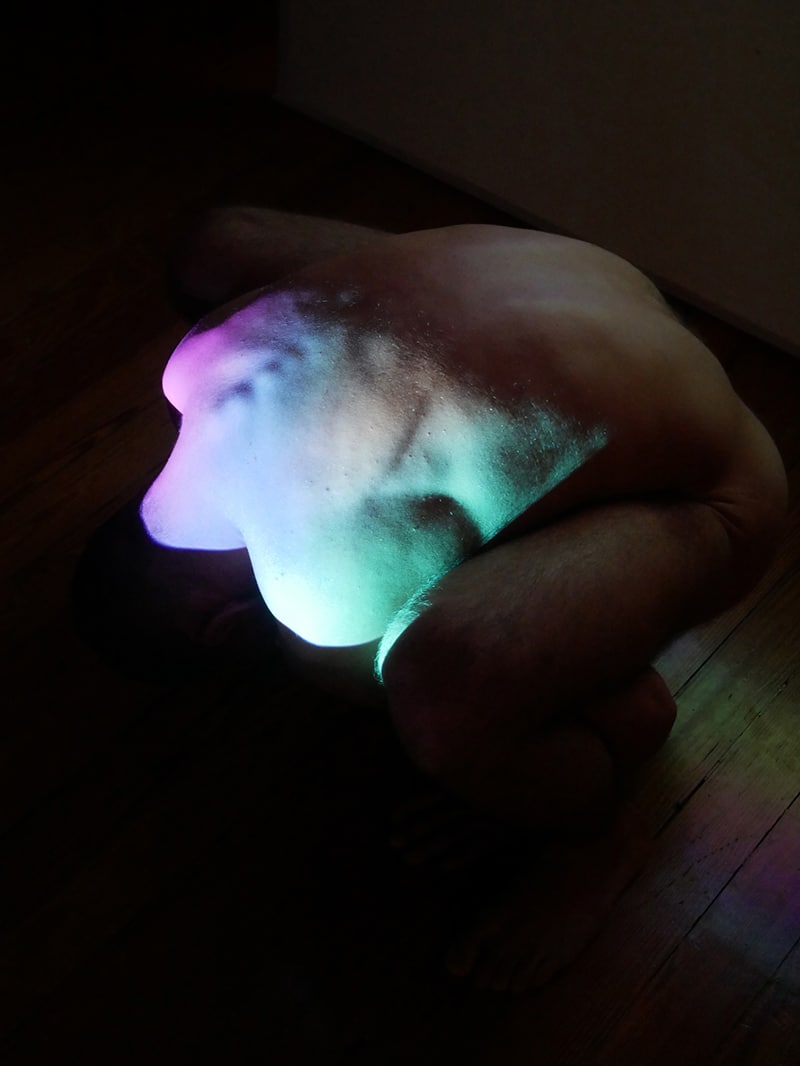
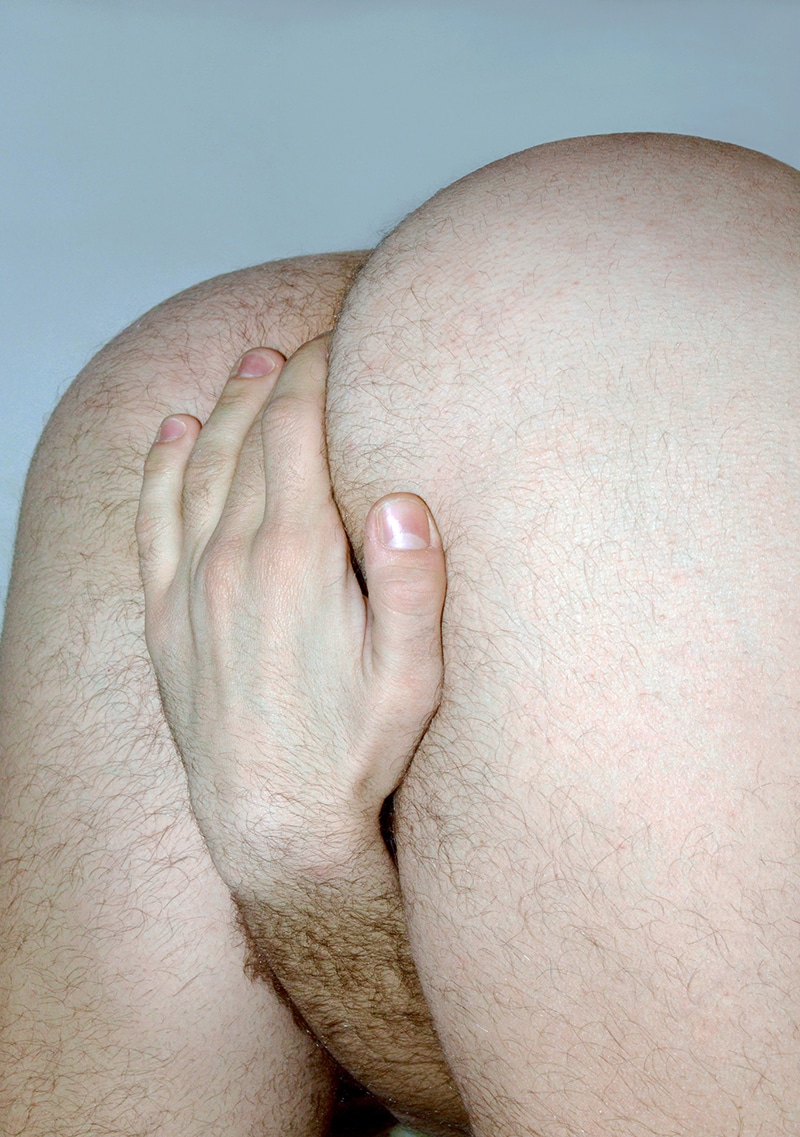
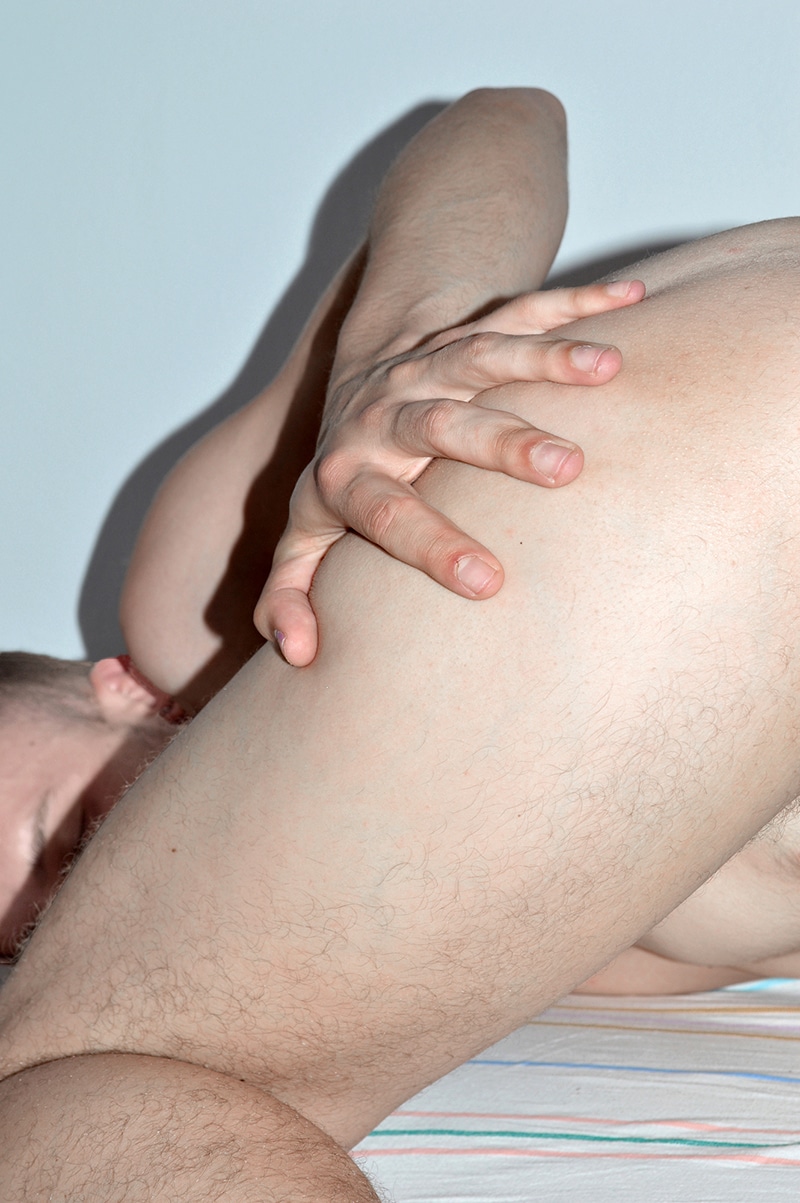
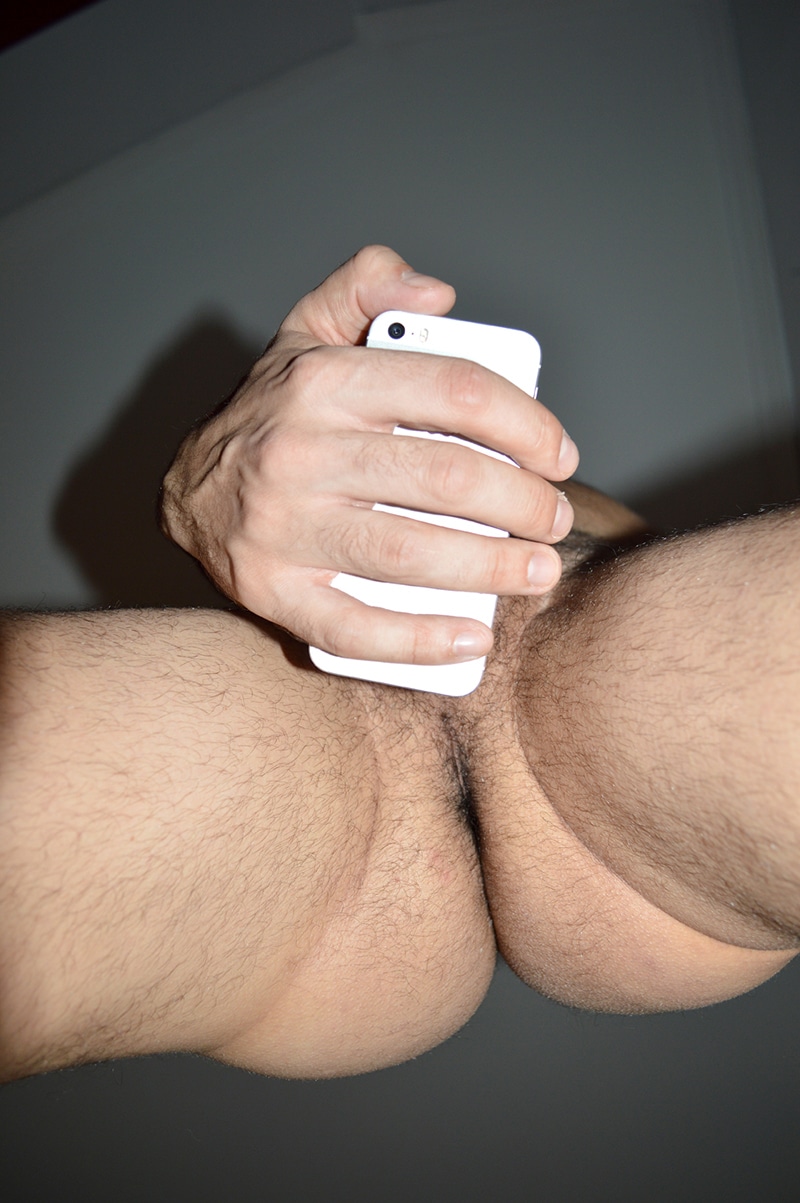
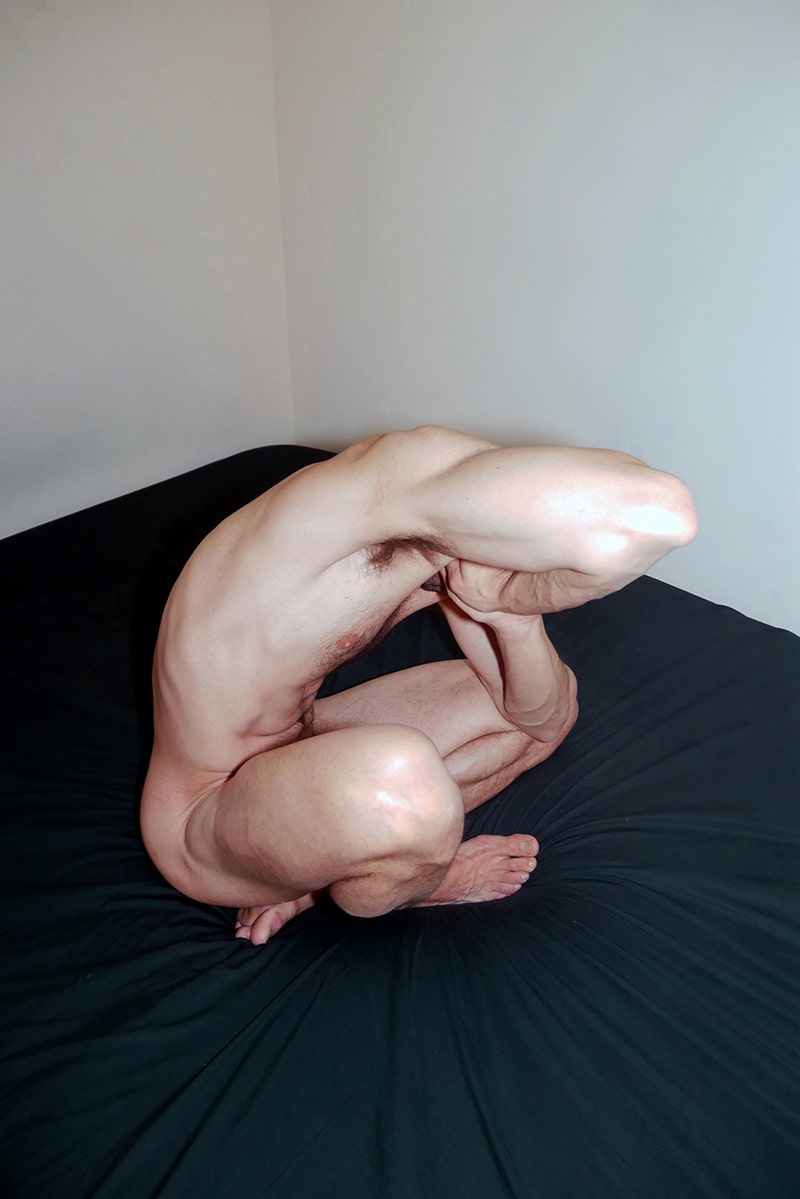


Antonio Rodríguez Molina for Fucking Young!
You can check Kostis Fokas’ work in his website and his Instagram page.



